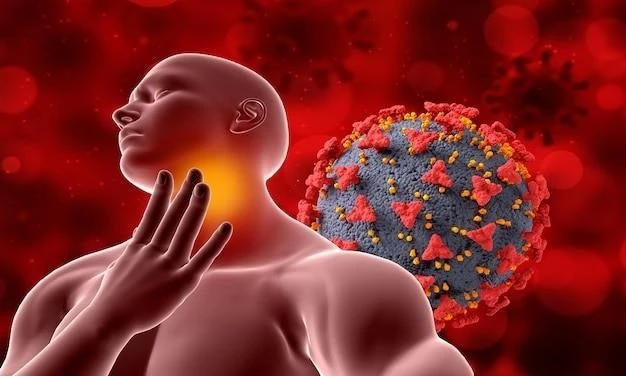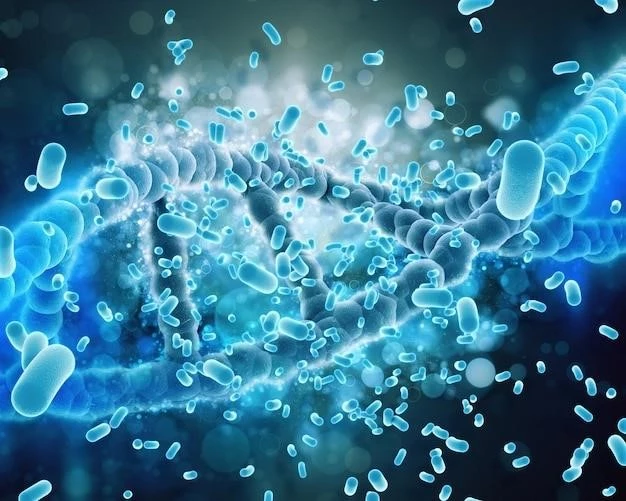Introduction to Escherichia coli Infection
Escherichia coli infection‚ caused by E․ coli bacteria‚ can lead to severe illness․ Understanding its transmission‚ symptoms‚ treatment‚ and prevention is crucial in public health․
Definition of Escherichia coli Infection
Escherichia coli infection‚ commonly known as E․ coli infection‚ is a bacterial illness caused by strains of Escherichia coli․ These bacteria can contaminate food or water‚ leading to gastrointestinal symptoms such as diarrhea‚ vomiting‚ and dehydration․ Severe cases may require antibiotics for treatment․ Prevention involves ensuring proper hygiene‚ avoiding foodborne contamination‚ and implementing public health measures for control and surveillance of outbreaks․
Importance of Understanding Escherichia coli Infection
Understanding Escherichia coli infection is crucial due to its potential for causing widespread outbreaks and severe illness․ Knowledge of the bacteria‚ transmission routes‚ symptoms‚ and treatment options is essential for effective prevention and control strategies․ Timely diagnosis and management of E․ coli infections can significantly reduce the impact on public health‚ prevent complications such as dehydration‚ and limit the spread of the bacteria within communities․ By recognizing the significance of this infection‚ healthcare professionals‚ public health authorities‚ and the general population can work together to minimize the risk of contamination‚ promote good hygiene practices‚ and enhance surveillance efforts to swiftly identify and respond to outbreaks;
Causes and Transmission
Escherichia coli infection is primarily caused by consuming contaminated food or water․ Understanding transmission routes is essential for prevention and control strategies․
Bacteria Involved in Escherichia coli Infection
Escherichia coli‚ commonly found in the intestines of humans and animals‚ is the main bacteria responsible for E․ coli infections․ Certain strains‚ such as E․ coli O157⁚H7‚ can cause severe illness․ Understanding the different strains and their virulence factors is crucial for determining the severity of the infection and guiding treatment decisions․ Proper hygiene‚ food safety practices‚ and sanitation are essential in preventing the spread of these bacteria and reducing the risk of contamination in food and water sources․ In outbreak situations‚ identifying the specific strain involved is key to implementing targeted control measures and preventing further transmission within the community․
Common Transmission Routes
The primary transmission route of Escherichia coli infection is through the consumption of contaminated food or water‚ particularly raw or undercooked meats‚ unpasteurized dairy products‚ and fresh produce․ Person-to-person transmission can occur in settings where hygiene practices are inadequate‚ such as daycare centers and healthcare facilities․ Contact with animal feces‚ either directly or through contaminated environments‚ can also lead to infection․ Understanding these transmission routes is essential for implementing preventative measures‚ including proper food handling‚ sanitation‚ and promoting good hygiene practices to reduce the risk of E․ coli contamination and illness․
Symptoms and Diagnosis
Recognizing common symptoms like diarrhea‚ vomiting‚ and dehydration is crucial for prompt diagnosis and treatment of Escherichia coli infection․
Common Symptoms of Escherichia coli Infection
Escherichia coli infection commonly presents with symptoms such as sudden onset of diarrhea‚ which may be bloody‚ abdominal cramps‚ vomiting‚ and in some cases‚ fever․ Severe infections can lead to dehydration and hemolytic uremic syndrome‚ a potentially life-threatening complication characterized by kidney failure․ Prompt recognition of these symptoms is essential for diagnosing E․ coli infection and initiating appropriate treatment to prevent complications․ Medical evaluation‚ including laboratory tests to identify E․ coli bacteria in stool samples‚ is crucial for confirming the diagnosis and guiding effective management strategies․
Diagnostic Methods for Escherichia coli Infection
Diagnostic methods for Escherichia coli infection include stool culture to identify the presence of E․ coli bacteria and specific toxins․ Polymerase chain reaction (PCR) tests can detect genetic material of the bacteria in clinical samples․ Serologic testing may also be used to detect antibodies in the blood in cases of hemolytic uremic syndrome․ Additionally‚ imaging studies such as renal ultrasound may be performed to assess kidney damage․ Prompt and accurate diagnosis is crucial for initiating appropriate treatment‚ preventing complications‚ and implementing public health measures to control the spread of E․ coli outbreaks․

Treatment and Management
Effective approaches to treating Escherichia coli infection include supportive care‚ hydration‚ and in severe cases‚ the use of antibiotics to combat the bacteria․
Approaches to Treating Escherichia coli Infection
The treatment of Escherichia coli infection typically involves supportive measures to manage symptoms‚ such as diarrhea and dehydration‚ with close monitoring of fluid and electrolyte balance․ In severe cases‚ especially those associated with hemolytic uremic syndrome‚ hospitalization may be required for intravenous fluids and other supportive therapies․ Antibiotics are generally not recommended for most E․ coli infections‚ as they can lead to increased toxin release and worsen outcomes․ However‚ in certain situations or for specific strains‚ healthcare providers may prescribe antibiotics based on individual risk factors and severity of the infection․ It is essential to follow medical guidance and complete the full course of treatment to ensure recovery and minimize the risk of complications․
Importance of Early Detection and Treatment
Early detection and treatment of Escherichia coli infection are vital to prevent complications and reduce the spread of the bacteria․ Prompt medical intervention can help alleviate symptoms‚ prevent dehydration‚ and decrease the risk of developing severe complications like hemolytic uremic syndrome․ Timely diagnosis enables healthcare providers to initiate appropriate management‚ provide necessary supportive care‚ and implement infection control measures to protect individuals and prevent outbreaks․ Public health authorities rely on early detection to track and respond to E․ coli infections‚ implementing measures to limit transmission within communities and safeguard public health․
Prevention and Control
Implementing strategies to prevent Escherichia coli infection through hygiene‚ sanitation‚ and food safety practices is essential for public health protection․
Strategies for Preventing Escherichia coli Infection
Preventing Escherichia coli infection involves implementing various strategies such as practicing proper hygiene‚ especially handwashing before handling food and after using the restroom․ Cooking meats thoroughly‚ avoiding unpasteurized dairy products‚ and washing fruits and vegetables are essential in reducing the risk of contamination․ Ensuring safe drinking water sources and promoting food safety practices can also prevent E․ coli transmission․ Public health education campaigns play a critical role in raising awareness about the importance of these preventive measures‚ empowering individuals to protect themselves and their communities from E․ coli infections․
Control Measures in Outbreak Situations
During Escherichia coli outbreaks‚ prompt and coordinated control measures are imperative to contain the spread of the bacteria․ Public health authorities conduct thorough investigations to identify the contamination source‚ implement targeted interventions‚ and communicate risks to the public․ Measures such as quarantine‚ environmental sanitization‚ and recall of contaminated food products may be necessary to prevent further cases․ Timely reporting‚ collaboration between healthcare facilities and regulatory agencies‚ and community engagement are essential components of effective outbreak control․ By swiftly implementing control measures‚ authorities can mitigate the impact of E․ coli outbreaks and protect public health․
Public Health Significance
Escherichia coli infection has a significant impact on public health‚ requiring robust surveillance‚ reporting‚ and control measures to prevent outbreaks and ensure community safety․
Impact of Escherichia coli Infection on Public Health
Escherichia coli infection poses a significant public health threat due to its potential to cause widespread outbreaks and severe complications․ The economic burden of healthcare costs and productivity losses associated with E․ coli infections underscores the importance of effective prevention and control strategies․ Outbreaks can strain healthcare systems‚ lead to increased hospitalizations‚ and have long-term consequences on affected individuals․ By prioritizing surveillance‚ rapid response‚ and community education‚ public health authorities can mitigate the impact of E․ coli infections‚ safeguard population health‚ and promote a safer environment for all․
Surveillance and Reporting of Escherichia coli Outbreaks
Timely surveillance and reporting of Escherichia coli outbreaks are essential for monitoring trends‚ identifying high-risk groups‚ and implementing targeted interventions․ Healthcare providers‚ laboratories‚ and public health agencies play a critical role in detecting and reporting cases to track the spread of E․ coli infections․ Effective surveillance allows for the early identification of outbreaks‚ rapid investigation of potential sources‚ and implementation of control measures to prevent further transmission․ By maintaining robust reporting systems‚ sharing data among stakeholders‚ and enhancing communication channels‚ public health authorities can strengthen their response to E․ coli outbreaks‚ protect at-risk populations‚ and reduce the impact on community health․
